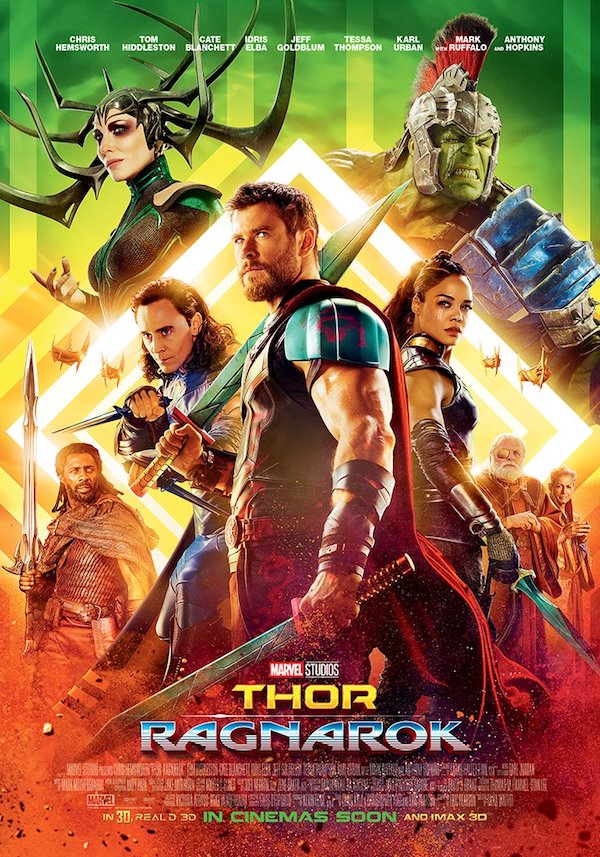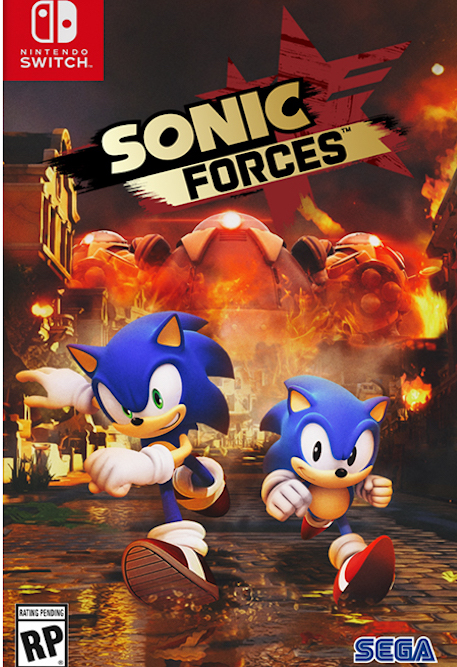The latest Thor movie from Marvel, Thor Ragnarok, has been released to moviegoers, and it has been received with strong reviews and an even stronger attendance. The crowds seem to agree that this Thor is a hit, and it comes in at a point where a lot of entries in a movie series start to lose steam. But instead, it feels like Thor has been rejuvenated, and it has left me looking forward to seeing the next one. In fact, I believe that Thor Ragnarok is the best Thor movie to date, hands down. Here are 10 reasons why I think so (caution: spoiler alert).

1. Even though the story in Thor Ragnarok is of Epic proportions, it avoids the boilerplate epic movie format.
The plot in Thor Ragnarok is actually pretty heavy, with the potential destruction of Asgard and the known universe itself. But despite this massive threat (definitely up there with Lord Of The Rings), at no time does the movie feel like an epic story. No doubt there is a time and place for such an approach, but I suspect moviegoers are getting a little tired of the epic approach so often seen in other movies of this magnitude. I don’t think Ragnarok even had the serious epic heroic poses moments, and I didn’t miss them at all.
2. The Music.
I have to mention the music used in Thor Ragnarok. In particular, how cool was Led Zeppelin used in the fight scenes? I have never seen the Immigrant Song better used, and it rocked the place, setting the perfect mood.
It’s interesting to note the song Immigrant Song contains the words “Hammer of the Gods”. How much more perfect can it get than that for a Thor movie? Some things were just naturally predetermined to go together, obviously.
3. Thor appears vulnerable, making him more like the rest of us.
Sure, Thor is a god by definition, but in Ragnarok, he appears to be much more human. In fact, he is having a very rough day of it all. From having a haircut forced on him by a scary contraption to losing one of his eyes, Thor shows a vulnerability that most people would never associate with the God of Thunder. And that makes him more relatable to all of us.
But it’s not just physical vulnerabilities that are on display in Thor Ragnarok. We get to see Thor having his feelings hurt and his ambitions questioned. The soul-searching talk with the Hulk shows a softer side of the heroes without being overly wordy (thanks to the Hulk). Thor reaches out to the big green guy and shows real concern for Bruce Banner being trapped inside. But the movie gets the meaning across without resorting to a long, drawn-out emotional scene.
Early on Thor loses his prized possession, his hammer, and we find Thor talking wistfully about it later as he mentions how he used to twirl it and fly. Thor is hurting from his loss, and it shows.
4. The movie shows that even without his main weapon, his hammer, the Hero still wins the day.
In the past Thor movies, it seemed like the audience was always wondering as to how he was going to use his hammer next to save the day. And for good reason, since having that much power at your constant beckon call is a tool that you can’t easily ignore when telling the story.
But in Ragnarok, Thor’s hammer is removed at close to the start of the movie. From this point on the story is about Thor, not Thor and his hammer. Of course, I hope he gets it back in a later movie, but it was good to see that side of Thor without his always ready weapon.
5. The movie tone is much more approachable than previous Thor movies.
Thor Ragnarok manages to avoid the epic and serious tone of the previous Thor movies. Nowhere is this more noticeable than with how Thor himself is portrayed. Instead of being invited along for the ride of the movie, Ragnarok draws us in and lets us experience some of the emotions as Thor himself feels it. Being able to relate to the God of Thunder tears down that distance between the normal viewer and the hero, making it feel more intimate and approachable.
Of course, the lighthearted aspects of the movie doesn’t hurt in this regard. Being able to laugh at a situation instead of being consumed by it builds a trust between people, and it would seem that trust is in play between moviegoers and Thor as he works his way through the events of Ragnarok.
6. Minor characters have a well used and entertaining role.
Some of my favorite moments in Ragnarok weren’t even the main characters. The surfer rock dude is a great example of this, presenting comedic relief as it moves the story forward.
7. The movie shows the female warrior side of Asgard.
So far the Thor movies have done a good job of showing the warrior side of the gods from Asgard, as we have seen from Thor, his brother, and even Odin himself. But the women were shown to be more god-like and aloof.
Ragnarok changes that, and now we have female warriors from Asgard that are even more potent than their men counterparts. Obviously Thor’s sister Hela is a powerful force to contend with, and she proves to be more than a match for Thor as she crushes his beloved hammer and soundly beats him in battle.
But it’s not only the female gods that are powerful in Asgard. The Valkyries, the protective female warriors of old in Asgard, are brought to the light as very formidable beings to respect. Even Thor is shown to have respect and admiration for these elite warriors as he admits that he wanted to be one in his youth.
8. Thor Ragnarok plays to your intelligence, not just your adrenaline.
Let it be said that there is plenty of action in the movie, and as you would expect in a Marvel Hero movie there are plenty of fight scenes to entertain. But the story doesn’t keep beating you over the head with how important the events are that are unfolding. Sure, all of Asgard and even the known universe is at stake, but we still have time to explore Hulk’s softer side without losing sight of that fact. Ragnarok assumes that the viewer can properly keep things straight as it takes the moment to pause between action scenes.
9. The movie shows an almost human history of Asgard that previously we were not allowed to see.
In previous Thor movies, we were asked to accept at face value that Asgard existed and was in control of its fate. But in Ragnarok, we find out how Asgard came to power, and we were shown the price of that rise to power. There were many wars and deaths that were necessary to bring Asgard to its seat of power, and even Odin’s greatest weapon, Thor’s sister Hela, ended up being a victim of its rise.
Showing the history of Asgard and its very real, almost human cost makes the story more believable. I don’t think people, in general, have an understanding of eternity or the power of a God, but knowing that something exists thanks to a powerful struggle to get it there makes it more relatable and appreciated.
10. The actors play a natural part.
One thing that Thor Ragnarok manages to do is to match the characters to the actors playing the part. Nowhere is this more apparent than having Jeff Goldblum play a very, well, Goldblum character. The actor plays this entertaining character to his natural strengths, and the movie is better for it.
Anthony Hopkins as Odin also delivers a part that seemed to be made for him. I can easily believe that Odin’s time is ending, and he is the ultimate Hero for Asgard as he realizes that Asgard exists not because of the place, but because of the people. His seeming sacrifice for Thor and being there for him later for advice seems like something the actor would do. The part seems natural.
While no doubt we will see a new Thor movie at some point in the future (especially with the box office numbers Ragnarok is returning), it is good to see that the movie series can reinvent itself in order to keep everything fresh. I have no idea as to the tone of the next movie, but I believe that Marvel has given Thor a solid foundation from which to tell new stories (and there are certainly plenty of other superheroes with which to share those stories). Besides, we may have just discovered that we actually like the guy.


